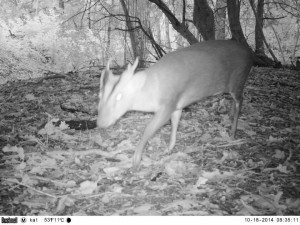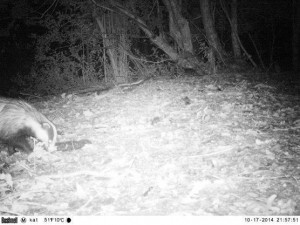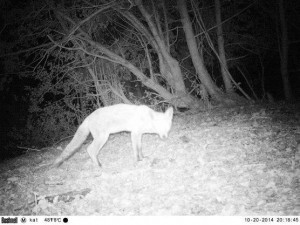The first six weeks of the course have absolutely flown past, and we’ve already learnt so much! We started off the course at the end of September with an induction at the university involving a health and safety talk, a tour of the life sciences building and the discovery of our very own desk space, which we fondly refer to as “the MRes cave”.… After a whistle-stop tour of the University we were off to Marwell to meet the conservation biologists and last year’s MRes students. We had an amazing time at the induction learning what to expect from the first semester, discussing conservation topics over wine and cheese, not to mention a few surprises!
After the inductions we settled down into a routine for lectures and tutorials. Our time is evenly split between the university and Marwell; we spend two days at Marwell studying wildlife conservation principles and techniques, and two days at the university boosting our statistics skills and learning how to promote ourselves and our research through tutorial sessions. We’ve also enjoyed joining the university’s conservation club where we discuss conservation papers with other conservationists in the department, and attending seminars at the university to engage in wider on-going research.
We’ve all really enjoyed the lectures that we’ve had so far. Highlights have included a guest lecture from Mark Stanley Price (Senior Research Fellow at Wildlife Conservation Research Unit, Oxford University) discussing reintroduction projects of the past and present, looking into the future of conservation reintroductions and wilderness; fascinating lectures about the application of population biology to the populations at Marwell (including lots of yummy M & M’s); and lectures highlighting the importance of considering evolution in conservation management both in captivity and in the wild. What we really love about the lectures is that they are so interactive so we spend lots of time discussing a wide range of conservation topics in detail.
They also give us the chance to learn from each other and it’s fascinating hearing about each other’s experiences in the field, especially gaining insights into conservation in other countries. Faisal’s stories about rehabilitating orang-utans, Suren’s insight into conservation in Sri Lanka and Aimee’s practical advice about her time in Botswana are interesting, entertaining and educational in equal parts.
Another fantastic part of this course is the access to specialist equipment. We had great fun putting out our camera traps in the surrounding woodlands of Marwell to see what was lurking as part of a deer survey, and even more fun reviewing the photos we captured. There were plenty of horses and dogs, but we also managed to capture some pretty good wildlife snaps! We also tried our hand at radio tracking, with the girls hiding in the woods with the radio signal and the boys with the radio tracking aerial trying to find them.
More recently we’ve been focusing on the upcoming 10 day field trip to Kenya which has involved huge amounts of planning and organisation. With five days to go we’re very excited; we’ve all had our vaccinations; our rucksacks, boots and binoculars are ready to go; and transport to the airport has been finalised.
We’re sure we’ll have some incredible stories to tell and pictures to show when we get back!
Posted By : dvf1e13


